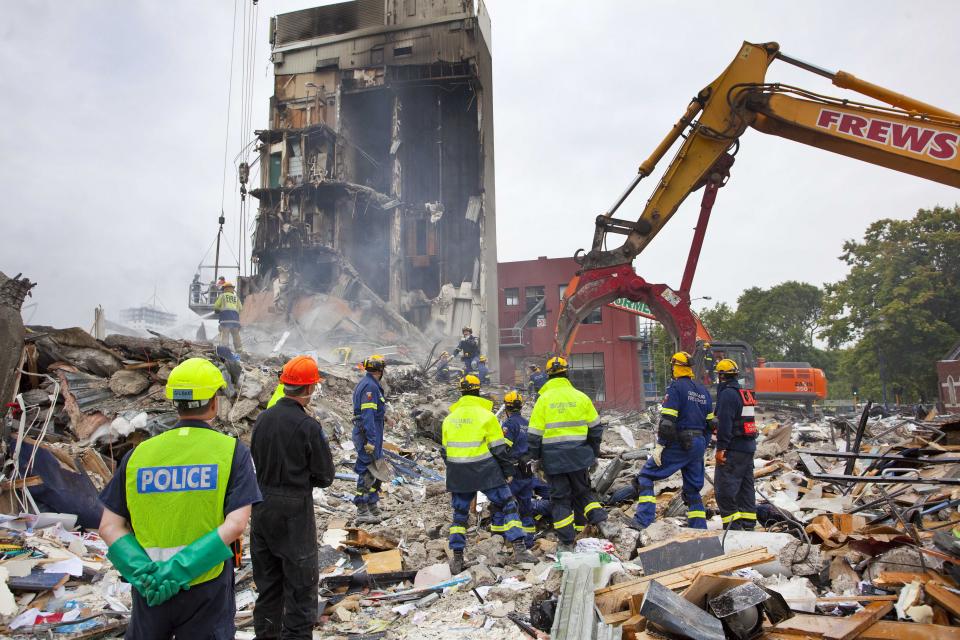
Qualitative research
Case studies of practical applications
Case Studies
Explore the ways that our research is being used by partners to make a difference to natural hazards management.
SEVERE THUNDERSTORM AND TORNADO OUTBREAK IN SOUTH AUSTRALIA
This study offers a better understanding of the meteorology of the 2016 South Australian thunderstorm and tornado outbreak by conducting high-resolution simulations.
Forecasting fire-generated thunderstorms
The PyroCb Firepower Threshold tool has been developed to aid in the forecasting of fire-generated thunderstorms, or pyrocumulonimbus.
STRENGTH IN THE FACE OF HIGH WINDS
This study shows that improvements can be made that can strengthen houses to reduce damage, as well as save money through the reduction of insurance premiums.
PHOENIX RapidFire
The PHOENIX RapidFire fire simulator places Australia as a world-leader in wildfire tools and analysis.
EARTHQUAKE MITIGATION OF WA REGIONAL TOWNS: YORK CASE STUDY
This study makes recommendations for future retrofit strategy implementation in York, WA which has many valuable historical buildings vulnerable to damage by a large earthquake.
COMPLEX DECISION MAKING AND TEAMWORK WHEN THE HEAT IS ON
This case study explores ways that incident management teams can take the time to communicate and analyse information before, during and after emergencies.
A NEW MODEL FOR HELPING
This case study addresses the changing requirements of volunteer roles and proposes new, more sustainable ways to keep our communities safe.
Answering the call
Answering the Call was the first national survey of the factors affecting mental health in police and emergency services.
“What if” questions drive future policy
Scenario modelling helps government, planning authorities and emergency service agencies consider the consequences of options when preparing for major disasters.
Intangible value
This study has developed a tool for generating estimates of non-financial benefits which is helping natural hazards managers justify the use and allocation of resources for mitigation efforts.
Recovery Capitals
The insights of this research will add to the global effort to improve disaster recovery efforts.
Australian Exposure Information Platform (AEIP): uncovering national exposure
This platform allows anyone to generate a report for any area of Australia at any time – before, during and after a hazard event has occurred.
Looking back can prevent future flood deaths
CRC research is informing flood warning campaigns, emergency service training and national policy by investigating the circumstances of flood fatalities in Australia from 1900 to 2015.
Emergency planning for animals
A range of emergency planning resources have been developed to highlight the importance of planning for animals during emergencies.
Better warnings to ensure action
With the multitude of warnings issued when an emergency hits, how can emergency services ensure their critical safety advice is heard and acted upon, rather than dismissed as noise?
School-based education for disaster risk reduction
CRC research has evaluated disaster risk reduction and resilience programs in Australian schools to explore contributions to mitigation and prevention of disaster impacts on lives and property.
Taking protective action during floods and storms
Public safety messages for floods and storms will be broadcast on ABC Radio this severe weather season, backed by CRC research.
COLLABORATION BASED ON INDIGENOUS LEADERSHIP
Research is building resilience by strengthening collaborations between Indigenous communities and the emergency management sector.
A MODEL FOR RELIEF AND RECOVERY
This study assesses resilience across the country, embedding the national findings to develop a better understanding of resilience, relief and recovery.
SHARING THE RISK
Research is helping government and emergency management agencies identify and allocate ownership of risks.
FINDING FIRES FASTER
The development of new and innovative algorithms are supporting near-continuous active fire surveillance from space unlike any other satellite hotspot products previously available.
Satellites to help show when the bush is ready to burn
Fire managers are benefitting from a fire mapping tool that provides live information on soil and vegetation moisture.
BETTER FIRE DANGER RATINGS
Contemporary fire danger ratings are incorporating new fire science research for the first time since the system was devised in the 1960s.
A SEASONAL VIEW OF BUSHFIRE
Strategic decisions on resources, prescribed fire management and community warnings have for the past 16 years been supported by the Bushfire and Natural Hazards CRC’s Seasonal Bushfire Outlooks.
CARBON ABATEMENT THROUGH BETTER FIRE MAPPING
Sophisticated fire mapping and modelling of fire severity is helping fire and land managers assess greenhouse gas emissions and develop carbon abatement plans.

